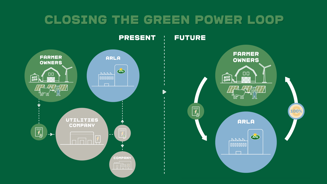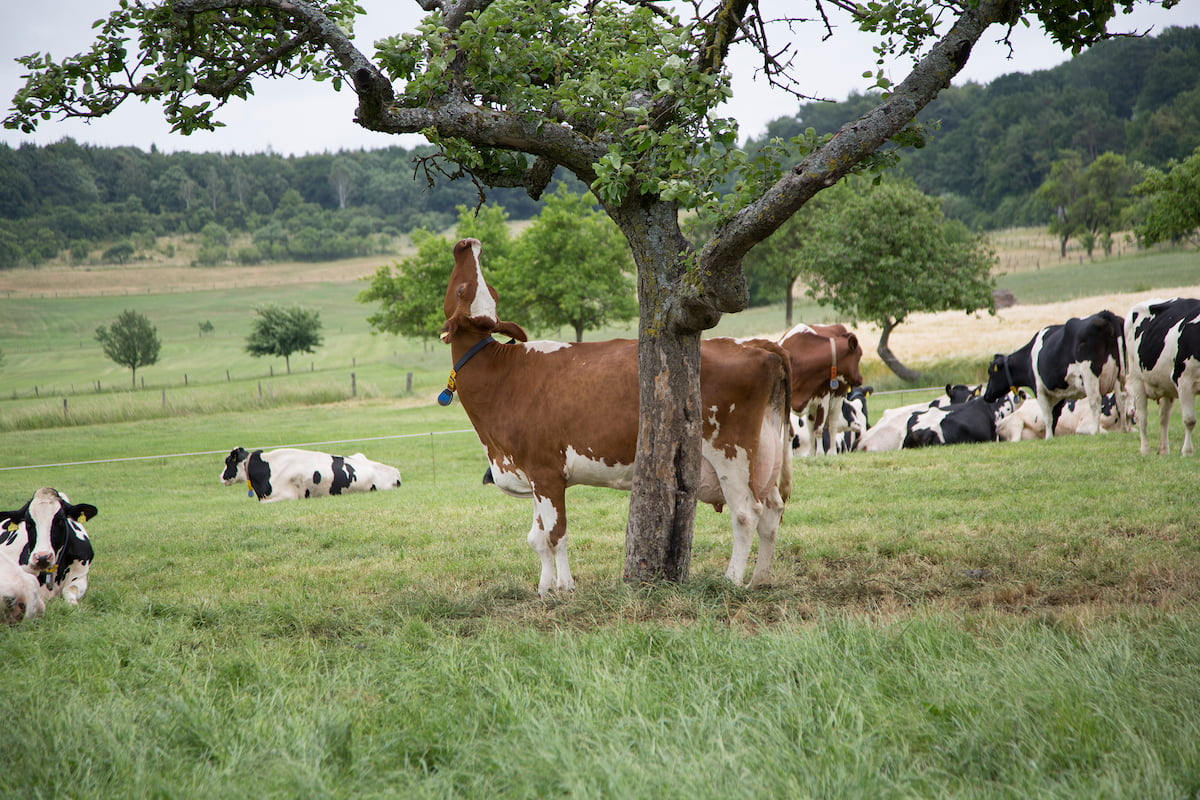For the last decades, Arla farmers have been working steadily towards sustainable farming and implementing green opportunities on their farms, such as circular farming practices, renewable energy and biodiversity and now also Climate Checks. A total of 7,986 farms across seven European countries have concluded a Climate Check using Arla’s new standardised tool for identifying carbon footprint and the data shows that they are among the most climate efficient in the world.

We have made a major investment in developing and implementing a solid model for measuring climate impact on a dairy farm. The unique data set that Arla farmers have now created clearly shows which activities will accelerate our reductions over the next decade. We will use this to decarbonise our farms at a faster pace and share our findings with stakeholders to help drive an effective transition for the whole industry. There’s a huge amount of value in this for all of us.
Arla Foods Chairman Jan Toft Nørgaard
Five universal levers
The data has revealed five universal levers to a lower carbon footprint for dairy on all types of Arla farms. They are:
- Better feed efficiency to improve milk yield
- Precision feeding to reduce surplus protein in feed rations
- A healthy and long life for the cow to improve milk yield
- Precise fertilizer management to reduce nitrogen surplus from feed production
- Better land use management to ensure better crop yields
The areas targeted by the five big levers are explaining the majority of the differences between the individual farms’ carbon footprints. The five levers apply to all Arla farms in the UK, Sweden, Denmark, Germany, the Netherlands, Belgium and Luxembourg regardless of size, geography, breed or landscape conditions.
“The data shows that all types of farms can achieve tangible results if precision farming is increased in these five areas. This helps us significantly going forward both to lower our CO2e footprint and for future investments on farms to help meet our ambitious climate goals,“ says Jan Toft Nørgaard.
See this video about how we help our farmers to reduce their c02-emissions:
A baseline, not a result
A total of 7,986 Arla farmer owners have assessed and submitted data to 203 questions about their herd, feed production, energy usage etc. Their data has been verified by an external climate advisor, who has also helped create the farmer’s action plan for further climate reductions based on the individual data.
The data confirms that Arla farmers are among the most climate-efficient dairy farmers in the world with 1.15 kg of CO2e per kilo of milk including peat lands.
“We are proud of where we’ve got to, but we are determined to go a lot further. For us, the number is not a final result but a baseline from where we need to improve. The Climate Checks is a tool to guide our next steps, to accumulate more insight and transparently measure our progress going forward,” says Jan Toft Nørgaard.
As the next round kicks off in June, Arla farmers will get access to a new digital tool that enables them to follow their own progression and to benchmark against data from other Arla farms. What is particularly interesting is to learn from the high-performers. The data shows that the best performing Arla farmers are able to produce a kilo of raw milk with a farm level footprint well below 0,9 kg of CO2e.
Data to improve common knowledge of most effective measures
The insights generated from the compiled data will be shared within the cooperative and also presented to politicians, research partners and industry stakeholders to improve the common understanding of what works and where to focus funding and research to support the longer-term transition on farms. It can also counter some of the myths and assumptions about what needs to be done on farm.
“Dairy has been an important and established part of many food cultures and economies around the world for many years because of its nutrient density, high quality proteins, versatility and taste. Within the industry we have always been clear about the responsibilities we carry to de-carbonise our production, however, there has been a lack of robust data at farm level to enable fact-based decision making and investment,” says Jan Toft Nørgaard.
There are still effects of dairy farming that are not fully scientifically understood. One example is carbon sequestration that can potentially be an important positive lever to mitigate climate change, not least for dairy farmers who have a lot of grasslands. Arla is part in a collaboration with FrieslandCampina, Fonterra, Mars, McDonalds and Nestle among others to develop internationally recognised and globally adopted carbon sequestration calculation guidelines for the dairy sector and when these are in place the aim is to include the impact of carbon sequestration in the Climate Check measurement.

The relatively low average footprint for Arla’s raw milk at farm level is a result of year-on-year improvements made by the cooperative’s farmers over the past three decades. In this decade of action, they aim to triple the speed of reductions to meet Arla’s science-based target of -30 per cent CO2e per kg of milk from 2015 to 2030 and to become carbon net zero by 2050.
Overall, the number of dairy cows in Arla’s core European markets have declined with between 50 and 80 per cent since 1950 while producing the same amount of milk with a significantly lower carbon footprint per kilo. This has been possible due to better animal welfare, strong farm management and new technologies.
Dairy farming’s carbon footprint
Want to learn more about how we work on becoming a more sustainable dairy industry? Click the link below and get insight into our Climate Check tool and how it affects our carbon footprint.
Learn more about how we measure carbon footprint


&format=webp&mode=crop)





